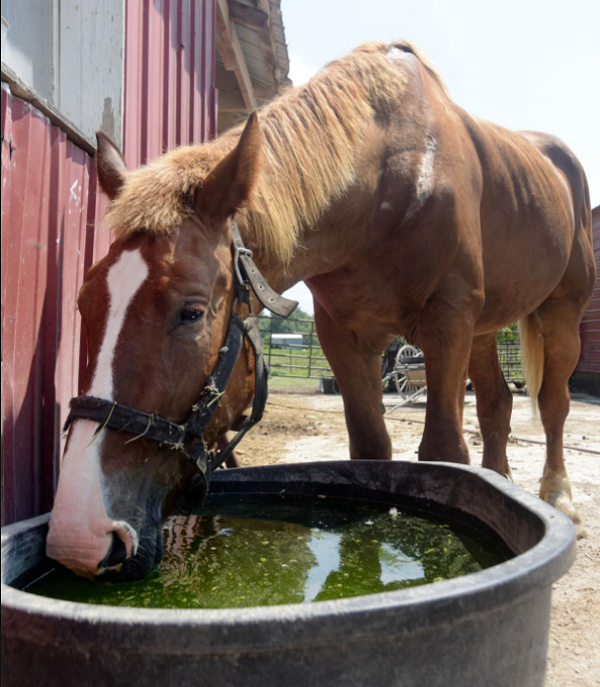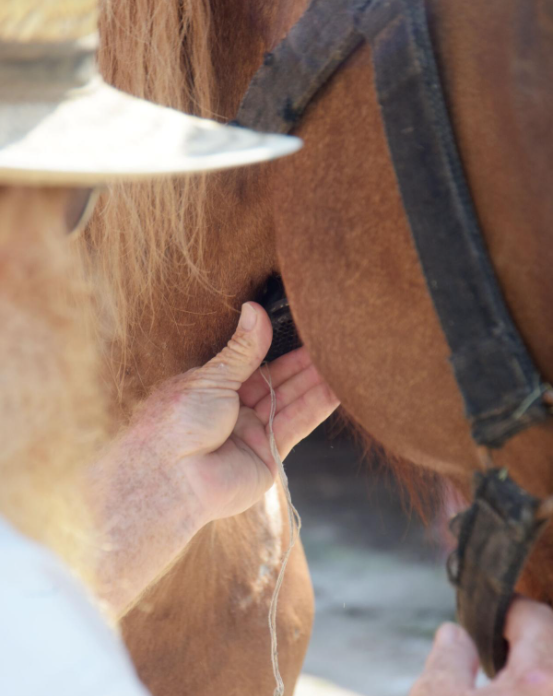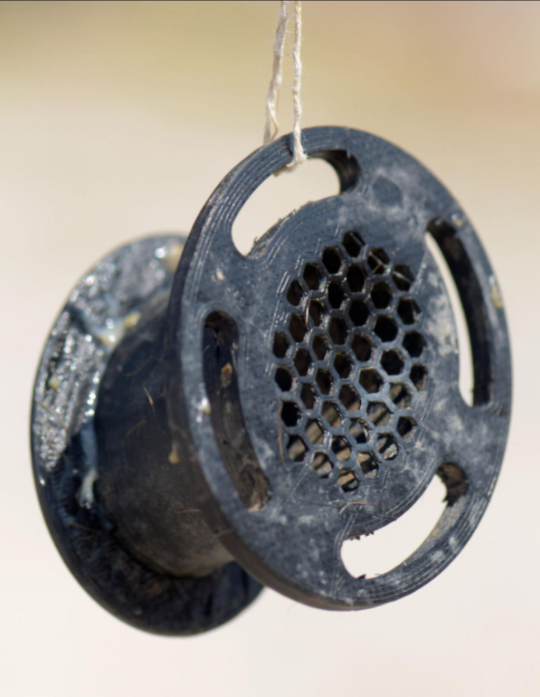One of the most essential workers on an Amish farm is the mighty draft horse…having gone to college about an hour south of the heart of Ohio’s Amish country, I can attest to this. Amish farmers, like Menno Petersheim of Clark, Missouri, prefer to use these large horses to plant and plow their fields, rather than relying on combines and tractors, and a good horse that works well with others can cost nearly $6,000, so it’s extremely important that they remain in tip-top shape. That’s why equine veterinarian Dr. Kevin Keegan, who saw Petersheim’s 1,800-pound Belgian draft horse Ronnie last year for breathing problems, turned to 3D printing when the original fix wasn’t working.
Petersheim and his large family live on a 240-acre property, growing oats, soybean, and corn and raising livestock. Ronnie is the lead plow horse of a seven-horse team, with three in the front and four in the back pulling a two-bottom plow together; as the horse in charge, Ronnie is square in the middle of the team. About three years ago, when Ronnie was about four years old, the draft horse began having noticeable breathing issues, and his concerned owner realized he needed help quickly.

Ronnie takes a drink out of his water trough in Clark. He was treated by equine veterinarian Kevin Keegan.
In 2018, equine veterinarians performed a tracheostomy on Ronnie, drilling a hole in his windpipe to get around his obstructed airway and help him to breathe better. This was a good plan, but they didn’t know just how hard Ronnie works on the farm—the horses plow the field until lunch, have a break to enjoy some oats, and then go back to work until dinnertime. Post-op, bugs and dirt started clogging the hole that had been cut in the horse’s windpipe, which cut off a lot of his oxygen supply and caused him to quickly get so tired he couldn’t work anymore.
Dr. Keegan, with the University of Missouri Veterinary Health Center, had to figure out how to keep Ronnie’s airway clear, while at the same time preventing debris from plugging up the hole in his windpipe, and drew up a quick sketch for a breathing device. He wasn’t sure what the next steps would be to turn his design into reality, but turned to the university for help, which ended up being a great decision.
“I contacted the president of the 3D printing club here, and he set me up with two students. And that’s how it got started,” Dr. Keegan explained.

Menno Petersheim inserts Ronnie’s device. He worked closely with the MU veterinary program to create this solution for the horse.
After seeing Dr. Keegan’s design for the breathing device, MU engineering students and 3D printing club members Holly Anderson and Griffen Mustion traveled to the Petersheim farm to see Ronnie. They had to create a device that was big enough to fill the hole in the horse’s windpipe, and was also firm enough not to move around but still flexible, so it could expand and bend while Ronnie was working.
They used 3D printing software to experiment with the depth, height, and size of the device, eventually making a total of 13 prototypes—each of which took four hours to print—before creating the supposedly first-of-its-kind equine windpipe device.
Kara Stowers, a neighbor of the Petersheims who drove Ronnie to the veterinary clinic in Columbia, said, “It’s truly amazing that Ronnie can still do all the things he can do in the field with that thing in his neck.”

Ronnie has two of these 3D printed windpipe inserts, which go in a hole in his neck and are swapped out regularly for cleaning.
We’ve seen 3D printing used to make all kinds of veterinary devices before, from implants and prosthetics to surgical cutting guides and even a skull roof. But I think this is the first one I’ve seen for a horse, as well as for a windpipe. Dr. Keegan explained that Ronnie’s final 3D printed insert acts like a screen door for the horse’s windpipe; resembling a spoon of yarn, the device features a small screen that blocks bugs, dirt, and extra skin from clogging up his airway while he works—finally allowing him to breathe easy on the job.
(Source: The Columbia Missourian / Images: Sydney Lukasezck for the Columbia Missourian)
Subscribe to Our Email Newsletter
Stay up-to-date on all the latest news from the 3D printing industry and receive information and offers from third party vendors.
Print Services
Upload your 3D Models and get them printed quickly and efficiently.
You May Also Like
Creality To Go Public
Creality is one of the largest 3D printing companies in the world. It probably ships more 3D Printers than anyone else. In a competitive market, the company has gone from...
Why Align Technology’s Slowdown Still Matters to 3D Printing
Align Technology (Nasdaq: ALGN), the company behind Invisalign clear aligners, reported lower-than-expected results for the second quarter of 2025. While the slowdown is tied to broader economic and dental industry...
Zhejiang University Researchers Potentially Develop Sustainable Closed Loop Resins
Zhejiang University researchers have come up with a thrilling discovery that could make resins much more sustainable. In a paper for Science, “Circular 3D printing of high-performance photopolymers through dissociative...
Carlsmed to Go Public in $101 Million Bid to Scale 3D Printed Spine Implants
Carlsmed is preparing to go public. The med-tech company, based in Carlsbad, California, plans to offer 6.7 million shares at a price range of $14 to $16 per share, which...





























